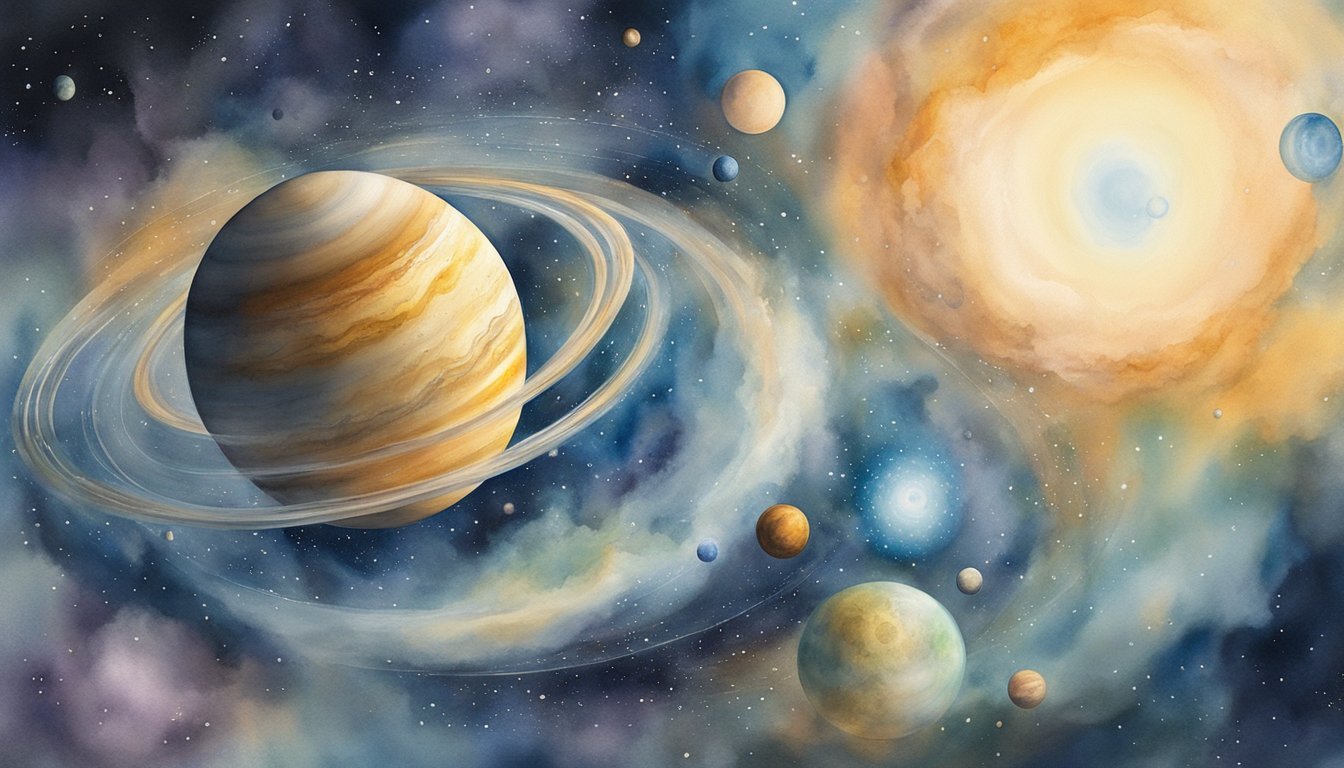The Birth of Planets
The creation of planets is an intricate process beginning with cosmic clouds and ending with vast, diverse planetary systems. Each stage of development is driven by a combination of cosmic materials and gravitational forces.
Nebulae and Protostellar Disks
A nebula is a colossal cloud of gas and dust in space, primarily composed of hydrogen. Within these swirling masses, gravity pulls material together to form a central concentration of mass, leading to the birth of new stars. Surrounding the nascent star is a flat, rotating protoplanetary disk, rich in the building blocks of planets.
Accretion and Planet Formation
As the protostar forms, particles within the disk collide and stick together, a process called accretion. Over time, these particles grow into planetesimals, the embryonic forms of planets. Larger bodies attract more mass due to their increased gravity, forming planetary cores. In the warmer inner regions of the disk, rocky planets begin to emerge, while further out, the cores of gas giants accumulate massive atmospheres from the surrounding nebular material.
Diversity of Planetary Systems
The final structure of a planetary system depends on the initial conditions of the solar nebula and the complex interactions between emerging bodies. Asteroids, comets, and moons can form in the leftover debris. The diversity is vast, with some systems hosting a few terrestrial planets while others have numerous gas giants or a combination of both. Gravitational interactions can even throw planets into interstellar space, leaving them as rogue wanderers without a star.
Characteristics and Evolution

In the grand tapestry of the cosmos, the formation of planets and their ongoing changes are a blend of complex processes and materials. From the dusty beginnings in a forming disk around a young star to the long-term evolutionary paths dictated by celestial mechanics, the study of these processes has unlocked a wealth of knowledge about our own Solar System and worlds beyond.
Composition and Types of Planets
Planets can vastly differ in composition, typically categorized as either terrestrial or gas giants. Terrestrial planets like Earth, Mars, Venus, and Mercury are primarily composed of rock and metal, generally featuring a solid surface. In contrast, gas giants such as Jupiter and Saturn have deep atmospheres rich in hydrogen and helium, with potential rocky cores deep within. Ice giants, Neptune and Uranus, have similar gaseous exteriors but contain more ices made of substances like water, ammonia, and methane.
Orbital Mechanics and Influence
The orbits of planets are governed by gravity, primarily influenced by their host star and interactions with other celestial objects. Each planet’s orbit is the result of its angular momentum following the conservation laws of physics, shaped further by the force exerted by other planetary bodies and the star‘s gravitational pull. Over time, interactions like gravitational tugs from moons and other planets can alter a planet’s orbit, potentially causing significant changes in climate and geology.
Studying and Discovering New Planets
Astronomers utilize various methods to detect and study planets beyond our Solar System, known as exoplanets. One common technique is the transit method, observing the dimming of a star as a planet crosses in front. Another is the radial velocity method, detecting wobbles in a star’s movement due to gravitational interactions with planets. Innovations in telescope technology and data analysis have led to the discovery of thousands of these exoplanets, expanding our understanding of planet formation and the unique characteristics that make up these distant worlds.

